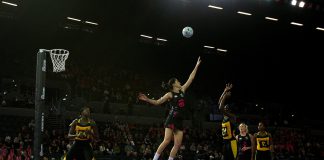Often referred to as Runner’s Knee, Iliotibial Band Syndrome (ITBS) is the second most common running pain and the leading cause of lateral knee pain in runners. Chances are, if the outside of your knee is sore from running, your iliotibial band (ITB) is the culprit. Here is an overview of what we know about this condition and what may help it.
What’s happening in the knee?
The ITB is the tight band that runs down the outside of the leg from the hip to just below the knee. The condition used to be called ITB friction syndrome, but some researchers believe this is actually incorrect and ITBS is caused by compressive forces at the insertion point of the ITB, not friction. We know that the pain tends to occur when the knee is bent to around 30 degrees during the standing phase of running and that downhill running is more painful than uphill or on the flat. Studies show that it is associated with increased fluid and thickening of soft tissues which causes the pain.
Why has it happened?
There are many factors that may contribute to developing ITBS. In one study, 64% of people had suddenly increased their running volume when they developed ITBS. Other studies have found that certain running styles or movement patterns are associated with developing this condition as they seem to place the ITB under strain. These include rotating your knees in or crossing your legs towards each other during a run. It has also been found that weakness in your hip and core muscles may also predispose you to developing ITBS.
How can you manage it?
The first thing that needs to be established is why it has happened in the first place. Resting is fine and will reduce your pain, but if you don’t address the underlying problems, it will just be there waiting for you when you return to running.
If you recognise that you went from running 15km a week to 30km all of a sudden, then you may just need to pace your training programme a bit and increase your distances more gradually. An increase of around 10% per week is often recommended. If you know your footwear is in urgent need of replacing, that might be something to try first as this may impact the rotation of your knees which is associated with increased strain on the ITB.
However, if the pain has come on independent of those things, you may benefit from an assessment with a physio to establish if it’s something musculoskeletal, biomechanical or both, that needs to change. Looking at muscle length, strength, control, movement patterns, running style, footwear and training schedule will likely reveal what things can be worked on to get you back to running pain-free.
Your physio will then give you advice and a home or gym exercise programme for you to work on independently. Within the clinic, they will perform any manual therapy that may need to be addressed to help manage your condition. Areas that commonly need addressing are activity modification (for example, running less or not downhill), gluteus and core muscle strengthening exercises, and slight widening or increasing of your steps in running to minimise the strain placed on your ITB.
If you have tried some of the above tips and are still struggling with pain on the outside of your knees, particularly with running, come and see one of the team at Healthzone Physiotherapy to help get you back on track.
Contact HealthZone Physiotherapy today on: (09) 477 2098






































